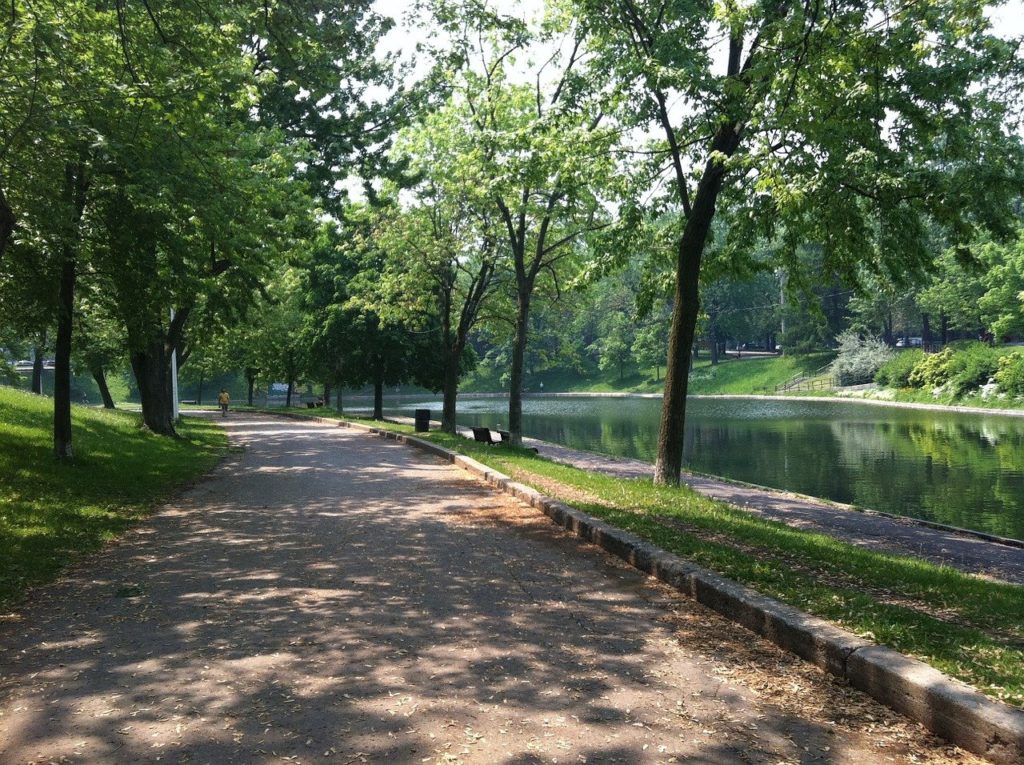Les sorties autour de l’école sont autant d’occasions de faire une multitude de découvertes et d’apprentissages. Un premier article vous présentait des activités à faire à l’extérieur pour le français et les mathématiques, voici aujourd’hui des suggestions à explorer pour d’autres matières.
Univers social
Toponymie
On lit généralement les noms de rues sans se poser de question. Sortir avec l’intention de noter les noms des rues, des parcs, des lieux de culte et des écoles pour ensuite faire des recherches sur ces personnes qui ont marqué l’histoire peut donner lieu à de belles découvertes. C’est aussi une belle occasion de s’ouvrir à la culture.
Cartes
Observer la carte du quartier régulièrement avant ou après les sorties permet aux élèves de se créer des repères, de réfléchir sur les façons de s’orienter, de suggérer des chemins à emprunter, de comprendre les éléments d’une carte (repères de couleurs et les symboles de la légende). En utilisant une carte au tableau numérique, on peut ajouter des détails au fur à mesure des sorties effectuées.
Observation des traces du passé
Invitez les enfants à repérer les indices de temps dans l’environnement naturel (grands arbres, roches sédimentaires, papillons éphémères) et dans les infrastructures et bâtiments (rouille, architecture, usure, statue…). On peut ensuite leur demander de mettre des photos des éléments trouvés sur une ligne du temps, ou de comparer ces éléments avec leur année de naissance et celles de leurs parents.
Arts
Apprécier l’esthétisme
Découvrir l’architecture et les éléments esthétiques dans la ville est aussi l’occasion de découvrir l’art et de l’apprécier. Savez-vous pourquoi on ajoute des éléments artistiques aux bâtiments? Pourquoi les municipalités installent des œuvres d’art ou des arrangements floraux dans les parcs, les ronds-points, etc.?
Dégradé de couleurs
Avant de créer une œuvre, pourquoi ne pas trouver les différentes teintes de vert (ou d’une autre couleur) dans l’environnement (gazon, feuille, chenille, affiche de nom de rue, banc de parc…). Coller des éléments ou des photos de ceux-ci sur un carton permet de rappeler comment faire les mélanges de couleurs.
Suivre le rythme
En musique, il peut être amusant d’aller dehors enregistrer des sons et les agencer avec des logiciels de mixage pour créer des rythmes et des mélodies.
Ah! Comme la neige a neigé!
Les conifères l’hiver ou les couleurs des feuilles d’automne créent de petites scènes pour jouer des extraits de pièces de théâtre ou pour interpréter des lectures de poésie à haute voix.
Science et technologie
Observation des habitats des animaux
Le site Biogenus offre de l’information sur les différents écosystèmes en fiches détaillées sur la faune, la flore, les champignons et les habitats du Québec. En apportant les appareils numériques portables, il sera pertinent de s’arrêter devant une corneille d’Amérique pour lire les caractéristiques de l’oiseau. Sachez qu’il est aussi possible d’envoyer nos découvertes au site Biogenus pour enrichir leur banque, un début d’initiation à la science citoyenne!
Observation des différentes écorces d’arbres
Les arbres ont-ils tous la même écorce? Est-ce qu’on peut les reconnaître par celle-ci? L’initiation à l’identification des végétaux est beaucoup plus amusante dans une forêt que dans la classe. On peut utiliser les guides d’identification ou l’application Kali au camp qui est conçue pour répertorier et identifier les arbres lors des sorties.
Éthique et culture religieuse
Lieux de culte
Il y a peut-être dans le quartier de l’école des lieux de culte à visiter, ou on peut simplement aller s’assoir sur le parvis de l’église pour lire un album de Jacques Goldstyn. Encore un prétexte pour générer une belle causerie.
Créer des liens avec les voisins
Sortir dans le quartier, c’est l’occasion d’interagir avec les gens de la communauté. Lors des fêtes comme la Saint-Valentin, pourquoi ne pas aller déposer des cartes ou des décorations dans les boîtes aux lettres des voisins de l’école. Créer de petits liens entre les enfants et les gens contribue à atténuer les barrières générationnelles.
Éducation physique et à la santé
Une bonne marche de santé
Marcher sur une bonne distance en gardant un rythme pour suivre tout le monde est en soi une saine activité physique qui encourage les bonnes habitudes de santé.
Jouer au parc
La sortie peut aussi amener les enfants à jouer dans les modules d’un parc. Ils apprennent alors à jouer prudemment, à partager un espace, à attendre leur tour, à gérer le risque et ils s’amusent en groupe.
Avant de partir
Avant de se lancer dans la classe extérieure, il est nécessaire de bien établir le cadre de ces activités avec les enfants. Donner les explications toujours au même endroit, dans la classe avant de partir ou autour du même arbre sur le terrain de l’école. Établir avec les enfants l’intention de la sortie. Rappeler les consignes de civisme et de sécurité n’assure pas le succès de la sortie, mais rapproche certainement de la réussite de l’objectif.
Un sac à dos avec le matériel nécessaire toujours prêt est pratique : crayons, planchettes avec pince, loupe, guide d’identification des espèces, téléphone cellulaire, tablette numérique, mais aussi Épipen et mini-trousse de premiers soins. Si on prévoit sortir souvent, il faut avertir les parents que les enfants auront besoin de vêtements en conséquence.
Dernier conseil, n’oubliez pas de passer à la toilette avant de partir.
Allez hop, dehors!
Pour débuter votre classe extérieure, consultez le guide de Carrefour Éducation La classe extérieure en réponse à la COVID-19.






